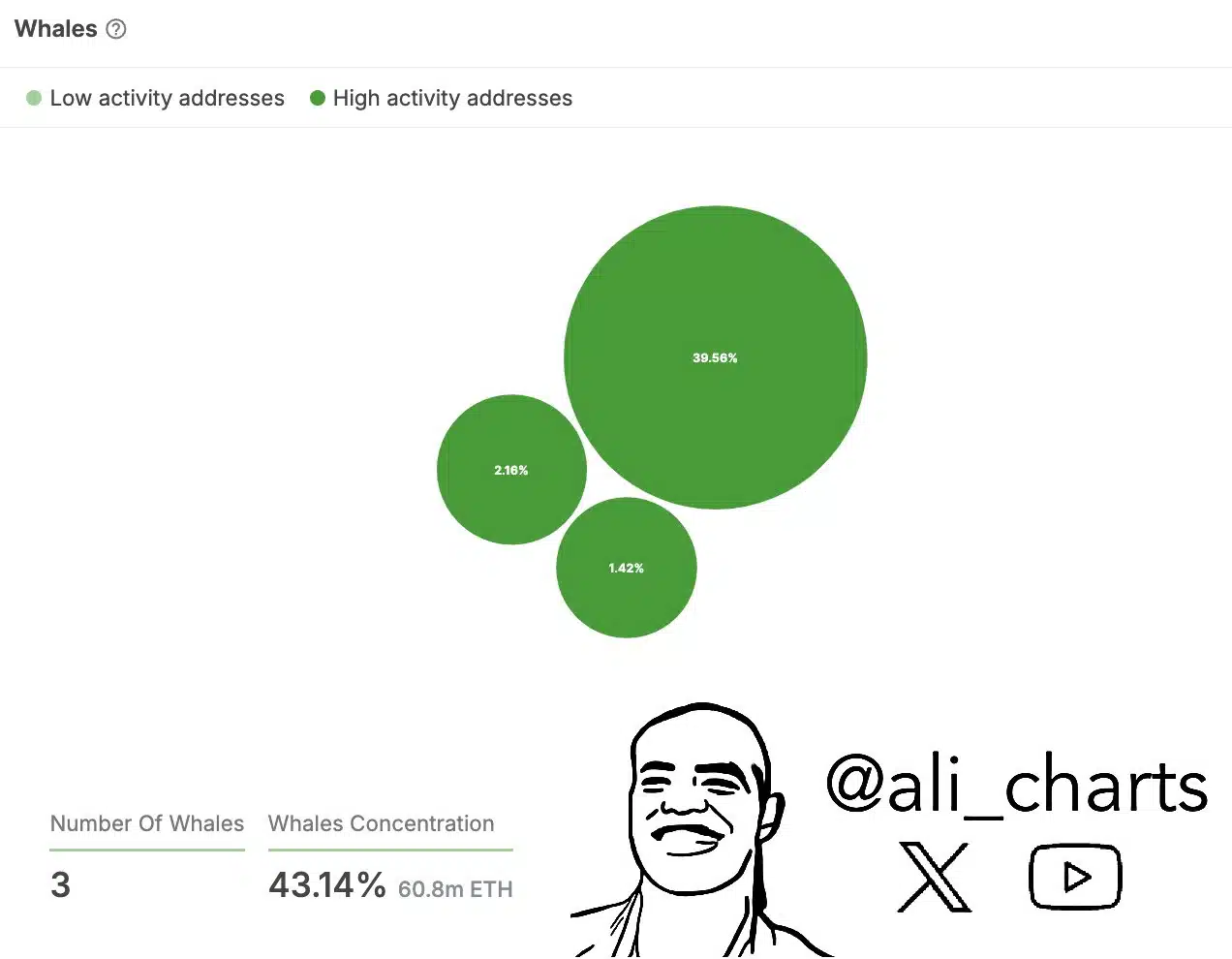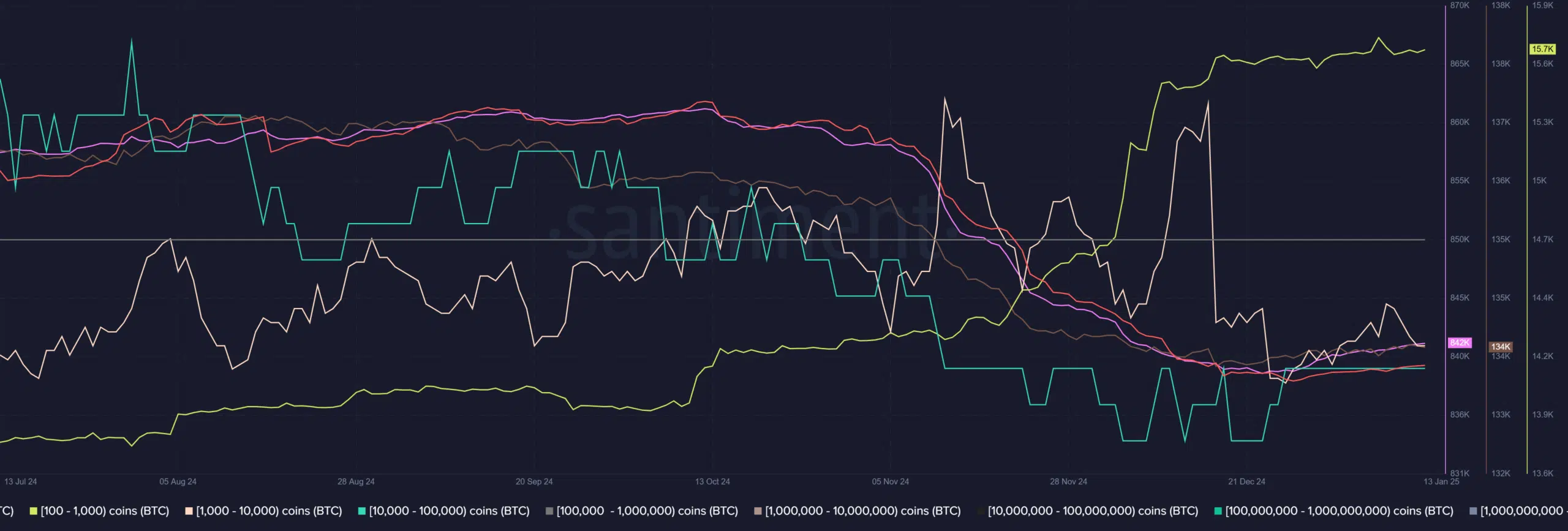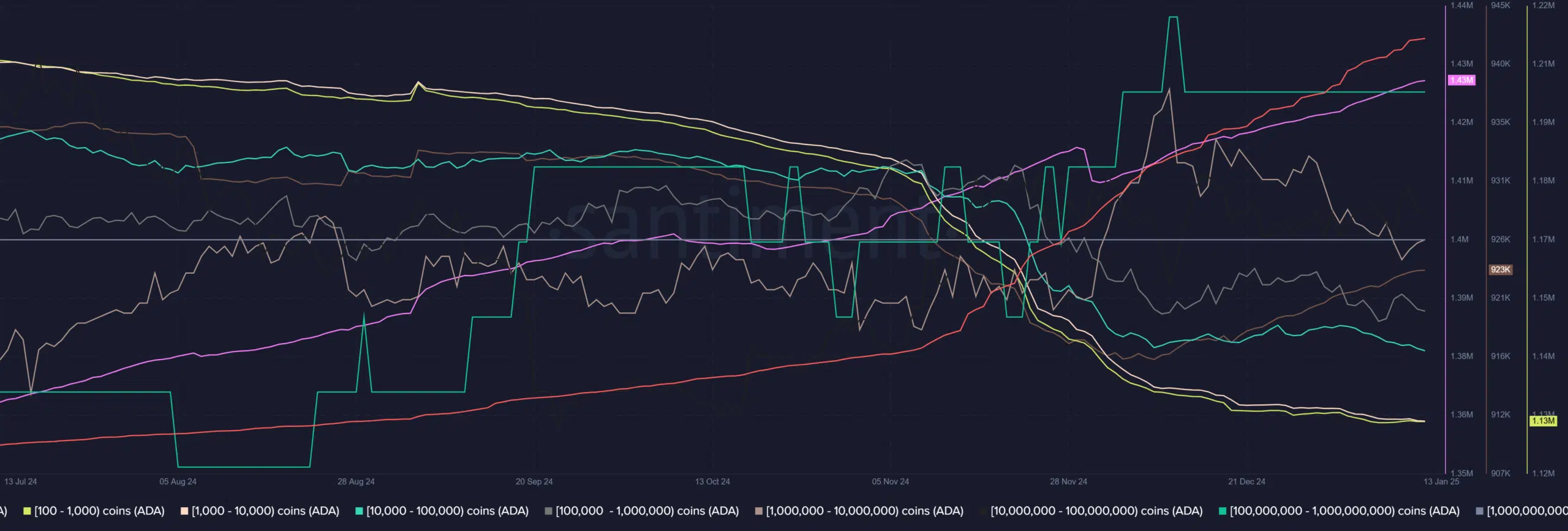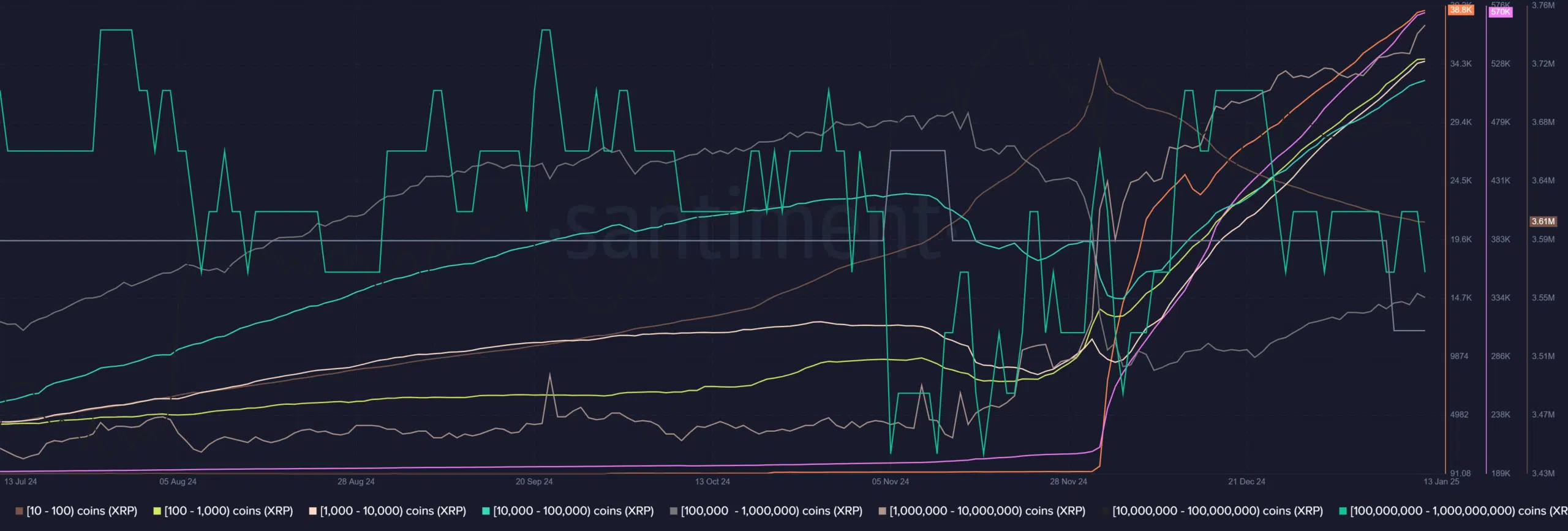Ethereum: Does 43% whale ownership raise concerns for ETH?

- Over 43% of Ethereum’s supply is concentrated in three whale addresses
- Concentrated ownership risks price manipulation, volatility, and decentralized governance erosion
Ethereum’s [ETH] supply is now highly concentrated, with just three whales holding over 43% of the total ETH supply.
This level of concentration is far from typical in decentralized networks and raises significant concerns about the potential for price manipulation, market volatility, and the overall health of the Ethereum ecosystem.
As the market continues to evolve, understanding the implications of this centralized ownership becomes crucial for both investors and the future stability of Ethereum.
The current state of Ethereum’s supply

Source: X
As of now, Ethereum’s supply is notably centralized, with just three whales collectively controlling 43.14% of the total ETH supply, amounting to 60.8 million ETH.
The largest whale alone accounts for 39.56%, highlighting the significant influence a single entity can have on the network.
Such concentrated ownership raises concerns about potential market manipulation, especially if these whales engage in coordinated selling or staking.
Recent trends in staking activities by high-activity addresses and their impact on Ethereum’s price volatility underscore the critical role these whales play in shaping market behavior and stability.
Ethereum: How centralization affects retail investors
The concentration of Ethereum’s supply in the hands of three whales poses significant challenges for retail investors. Price manipulation becomes a looming threat, as even slight movements of these massive holdings can trigger sharp market swings, wiping out smaller investors’ gains.
Moreover, such centralization undermines the ethos of decentralization, reducing retail participants’ influence in network governance, particularly in staking and voting mechanisms.
On a psychological level, retail investors might hesitate to engage, perceiving the ecosystem as skewed in favor of dominant players. This imbalance could stifle broader adoption and innovation, as trust in the network’s fairness diminishes.









